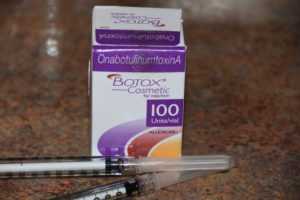
In the September 2015 issue of the JAMA Dermatology journal, an article appeared entitled ‘Pain Perception with Botulinum Toxin Type A Injections’. In this study the authors compared differences in the perception of pain with Botox injections using 30 vs 32 gauge needles. Twenty (20) patients were studied using a blinded randomized clinical trial approach for their glabellar and forehead wrinkles with one side of the forehead injected with a 30-gauge needle and the other side with a 32 gauge needle. Similar injections were also done in the arms. For facial injections, more pain was seen with the 30-gauge needles which were associated with more pain in 8 patients (40%) compared with the 32-gauge needles, which were associated with more pain in 3 patients (15%) Mean injection pain scores for the face were somewhat lower with the 32-gauge needle (3.4/10) than with the 30-gauge needle (4.15/10). The mean pain scores were lower for the arm injections (1.2 with the 32-gauge needle and 1.66 with the 30-gauge needle).
The study found that significant pain was almost 4X times more likely with facial injections with 30-gauge needles than with 32-gauge needles. This was different in the arms where there was very little if any differences in pain associated with the two needle sizes.
While this study is far from conclusive, it is logical to assume that the smaller the injection needle the less pain that may likely result from its use. While no injection can be absolutely pain free, use of 32-gauge needles may be as close as one can get. Because they are more expensive, however, many practices are likely to not routinuely use them and save them for the most pain-sensitive injection patients.
Dr. Barry Eppley
Indianapolis, Indiana


